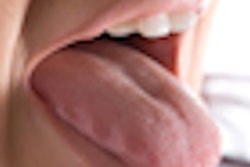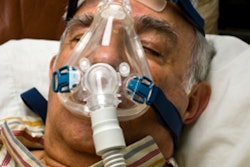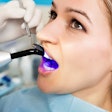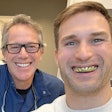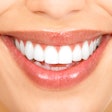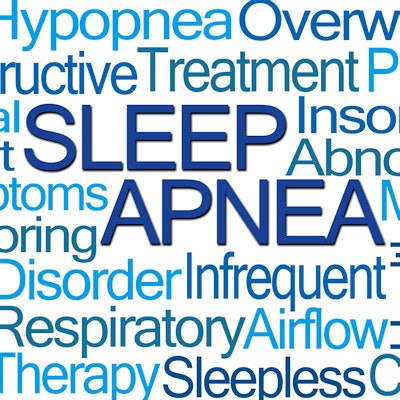
Mandibular advancement devices can help treat obstructive sleep apnea, but they must be worn nightly for life and are thought to cause long-term dental and skeletal side effects that have not been well defined. Researchers conducted a review to learn more about these issues and how they evolve over time.
They identified studies on dental or skeletal side effects in adults who used these devices over the long term and found that use of the devices produced clinically relevant dental and skeletal side effects, such as a reduction in overjet and an increase in lower incisor inclination, that progressed over time. Their research was published in the European Journal of Orthodontics (June 13, 2018).
"These modifications can be clinically small, but the dentist should be experienced in dental sleep medicine to inform the patients and to deal with these events," the study authors wrote. "Since the side effects are progressive, patients need to be monitored over time."
The researchers were led by Maria Lavinia Bartolucci, a doctoral candidate in the orthodontics section of the biomedical and neuromotor sciences department at the University of Bologna in Italy.
Side effects for life
Use of mandibular advancement devices has been shown to treat OSA, but they have also been linked to short-term side effects, such as articular and muscle impairments, gum irritation, and excessive salivation, that can be managed with conservative therapy. Long-term dental and skeletal side effects are thought to be due to the need for nightly use of the devices for life, according to the study authors.
“Since the side effects are progressive, patients need to be monitored over time.”
While some previous research examined long-term issues, the study parameters varied. To learn more, researchers conducted the current systematic review and meta-analysis.
They searched various medical research databases and ultimately included 21 randomized controlled trials and cohort studies on dental or skeletal side effects or both in adults who wore a mandibular advancement device for treating OSA or snoring for at least two years:
- Three were randomized controlled trials.
- Eight were prospective cohort studies.
- The remaining 10 were respective cohort studies.
Two studies compared the side effects of continuous positive airways pressure (CPAP) devices and the mandibular advancement devices, two compared two types of the mandibular devices, and 17 examined dental or skeletal side effects or both of one type of the mandibular device.
The studies used dental casts, cephalograms, both, or clinical examinations to assess side effects. Researchers performed overbite and overjet measurements in 11 studies using a sliding caliper, one study used a ruler, one used software on 3D models, and one declined to report the method used.
The three randomized controlled trials were the only studies judged by the review authors to have a strong design, although they found many of the included studies had a low risk of bias.
Most of the investigations concluded that mandibular advancement devices caused "clinically irrelevant but statistically significant dental side effects after the follow-up," although some studies found both clinically and statistically significant dental effects. Six studies found that these devices caused small statistically significant skeletal changes, with four not finding significant changes.
Quantitative analysis determined that the duration of device use significantly affected decreases in overjet, overbite, upper and lower incisor inclination, a skeletal sagittal value, and anterior facial height. The authors judged the quality of the evidence to be moderate for overbite and lower incisor inclination, low for overjet and upper incisor inclination, and very low for anterior facial height changes.
Over two to 11 years, overjet decreased 0.2 mm to 2.0 mm and overbite decreased 0.6 mm to 2.3 mm, while over two to seven years, upper incisor inclination decreased 1.4° to 3.1°, and lower incisor inclination increased 1.3° to 6.6°.
"The clinical relevance of these outcomes is strictly related to the baseline dental occlusion of the single patient," the authors wrote, with different clinical issues arising if a patient starts with increased overjet or overbite versus normal values.
Orthodontic treatment could be performed with the use of transitional CPAP therapy if a patient wants to restore dental occlusion to correct possible occlusal discomfort, the authors explained.
Informing the patient
The included studies had shortcomings of inconsistency due to different follow-up periods, lack of control for possible confounders, and a serious risk of bias due to deviation from the intended intervention in some studies with several study participants dropping out. Confounders, such as periodontal status, mandibular advancement amount, drug intake, metabolic diseases, and obesity, could have influenced the rate of tooth movement.
Additionally, some studies had small sample sizes, many were not randomized controlled trials, most followed participants for just two to three years, and only some were included in the quantitative analysis of cephalometric data due to heterogeneity among the studies of parameters measured.
However, the results were consistent with the literature on dental modification by mandibular advancement devices, but consensus is lacking regarding skeletal changes, the review authors noted.
"It is essential to inform the patient about the adverse effects but also to make him aware that the severity of OSA is dominant over relatively small dental and skeletal changes," they concluded.




